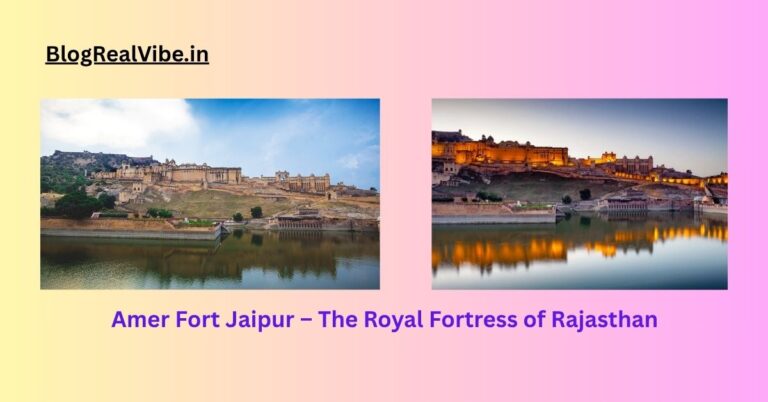“City Palace Jaipur – A Royal Journey Through Rajasthan’s Heritage”
History, Highlights & Visitor Guide
Nestled in the heart of the Pink City, the City Palace of Jaipur stands as a majestic reminder of Rajasthan’s royal legacy. Blending Rajput, Mughal, and European architecture, this palace is more than a monument — it’s a journey into the grandeur, traditions, and tales of a bygone era.
Built in 1727 by Maharaja Sawai Jai Singh II, the founder of Jaipur, the palace served as the seat of the royal family. Even today, a portion of it remains the private residence of the Jaipur royals.
🏗️ Historical Highlights & Architecture:
- Constructed shortly after the founding of Jaipur as India’s first planned city.
- A stunning fusion of Rajputana strength and Mughal elegance, with touches of Victorian design.
- Houses multiple courtyards, gates, and buildings — like the Chandra Mahal and Mubarak Mahal.
- The iconic Peacock Gate, representing autumn, is a major photo and spiritual attraction.
💥 Cultural and Royal Significance:
- Was the administrative and ceremonial center of Jaipur’s rulers.
- Home to priceless artworks, royal costumes, weapons, and manuscripts.
- The Diwan-i-Khas (Hall of Private Audience) features the world’s largest silver urns.
- Still used for royal rituals and festive occasions by the royal family.
🌟 Why You Should Visit City Palace:
- Step into living history — parts of the palace are still inhabited by royalty.
- Offers a glimpse into Rajasthani heritage, art, and culture.
- Enjoy guided tours, photography spots, and cultural exhibitions.
- The palace is centrally located — near Jantar Mantar and Hawa Mahal, making it a must-visit on any Jaipur itinerary.
As the heart of Jaipur, City Palace is where past meets present — and every stone tells a story.
📌 Explore more travel gems and heritage tales on BlogRealVibe.in — where culture comes alive.

